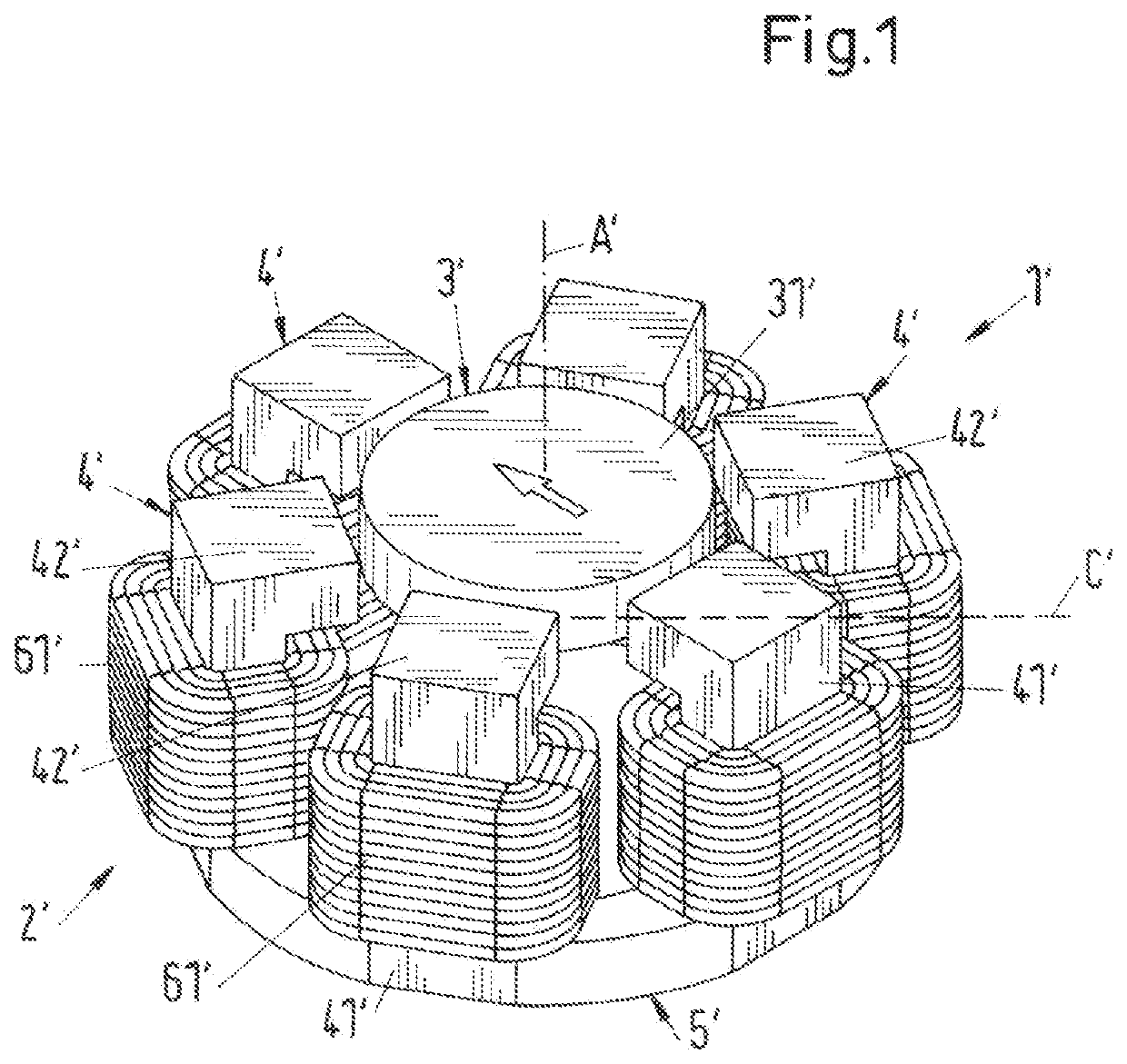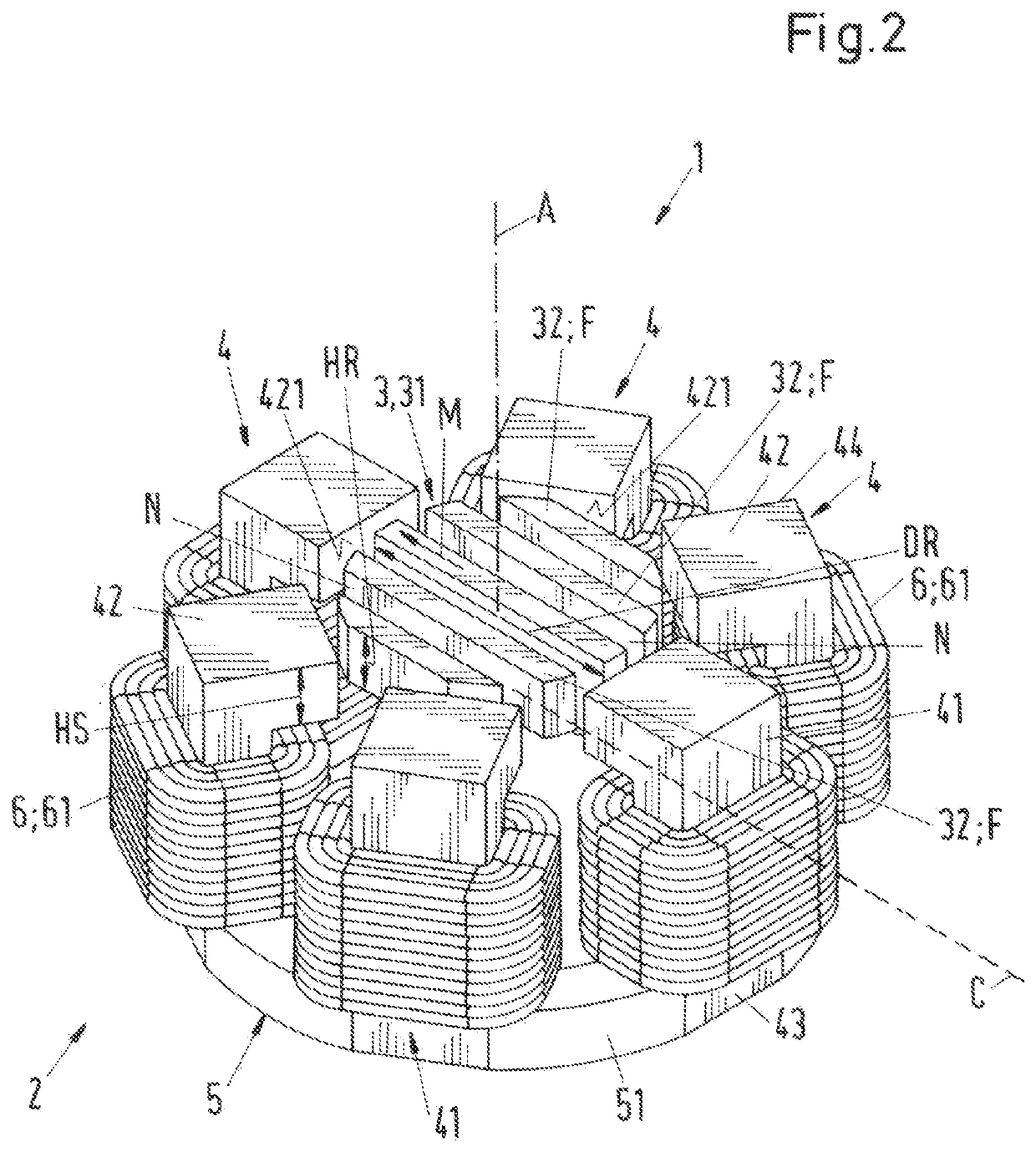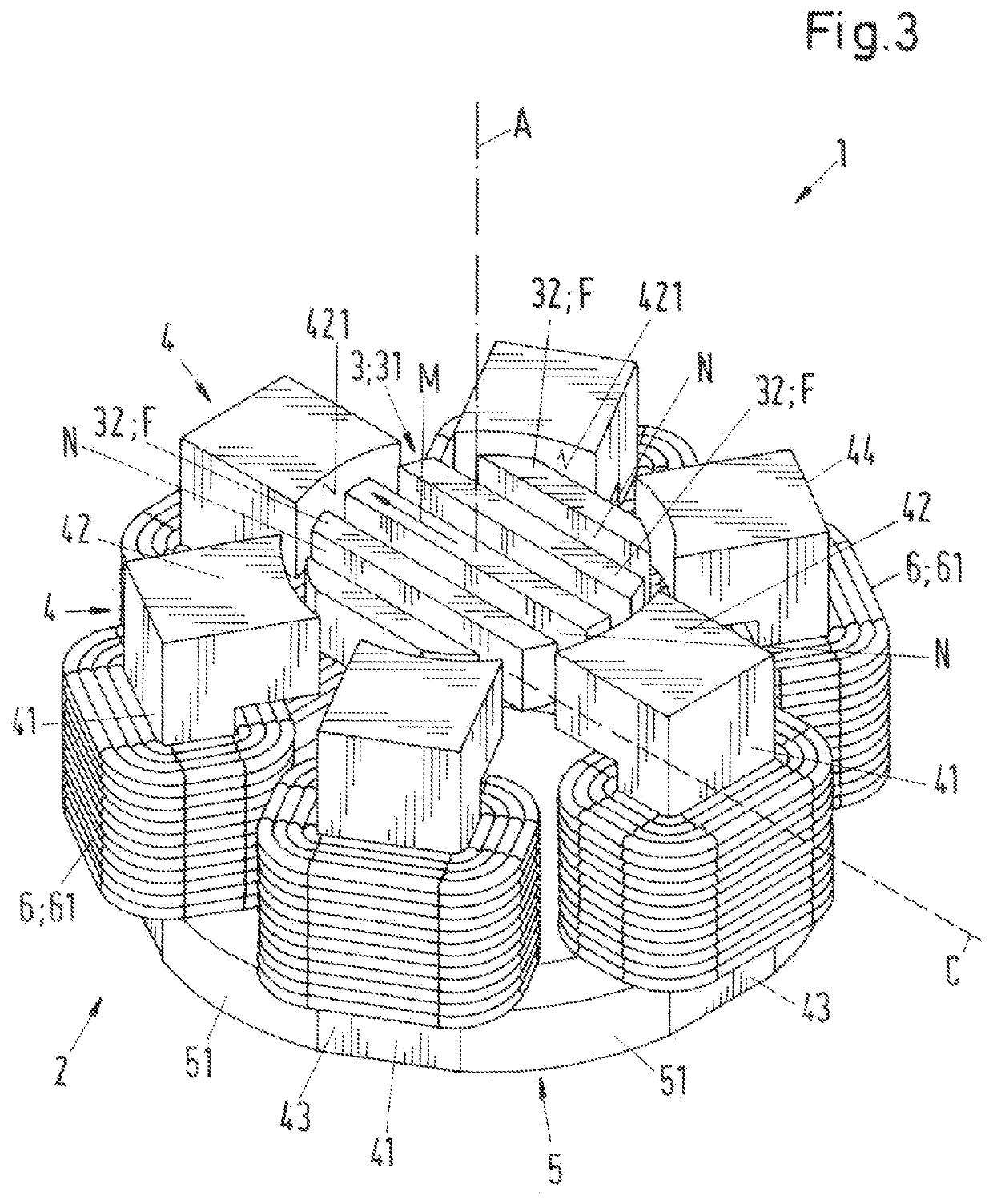Electromagnetic rotary drive and rotational device
a technology of rotary drive and rotor, which is applied in the direction of bearings, dynamo-electric machines, shafts, etc., can solve the problems of increased cost, significant contribution, and metals represent a substantial cost factor, so as to reduce the fluctuation of torque at least significantly, simplify the sensor system required for the control and regulation of the rotor position, and minimize the effect of eddy current loss
- Summary
- Abstract
- Description
- Claims
- Application Information
AI Technical Summary
Benefits of technology
Problems solved by technology
Method used
Image
Examples
first embodiment
[0067]FIG. 2 shows a perspective representation of an electromagnetic rotary drive according to the invention, which is designated as a whole with the reference sign 1. The rotary drive 1 is configured as a temple motor and comprises a stator 2 and a rotor 3 being contactlessly magnetically levitated in the stator 2, which rotor is configured free of coils, free of a cage and free of permanent magnets. The stator 2 is also free of permanent magnets. The rotor 3 comprises a magnetically effective core 31, which is configured in the shape of a circular disk or of a circular cylinder of the height HR (see also FIG. 4) and with the diameter DR. The term “magnetically effective core 31” means that region of the rotor 3, which interacts with the stator 2 for the torque generation and for generating the magnetic levitation forces. In the operating state, the rotor 3 is contactlessly magnetically drivable about a desired axis of rotation by the stator 2. The desired axis of rotation refers ...
second embodiment
[0119]In the variant shown in FIG. 7 that corresponds to the coil core 4, which is shown in FIGS. 3 to 5 for the second embodiment, the end face 421 of the transverse limbs 42 of the coil cores 4 is curved as a segment of a circular cylinder, which is coaxial with the rotor 3. The radially outer boundary surface 49 of the coil core 4 is configured as planar surface, i.e. it is not curved.
[0120]In FIG. 7, the inner circle along which the end face 421 of the transverse limb 42 extends, is indicated by the circle having the reference sign SI. This circle SI is concentric with the disk-shaped magnetically effective core 31 of the rotor, i.e. the center of the circle SI lies on the desired axis of rotation of the rotor 3. Thus, the curvature of the end face 421 follows the curvature of the outer surface of the magnetically effective core 31 of the rotor 3.
[0121]For the production of the variant shown in FIG. 7, for example, the variant shown in FIG. 6 can be assumed. Then the planar end ...
PUM
 Login to View More
Login to View More Abstract
Description
Claims
Application Information
 Login to View More
Login to View More - R&D
- Intellectual Property
- Life Sciences
- Materials
- Tech Scout
- Unparalleled Data Quality
- Higher Quality Content
- 60% Fewer Hallucinations
Browse by: Latest US Patents, China's latest patents, Technical Efficacy Thesaurus, Application Domain, Technology Topic, Popular Technical Reports.
© 2025 PatSnap. All rights reserved.Legal|Privacy policy|Modern Slavery Act Transparency Statement|Sitemap|About US| Contact US: help@patsnap.com



